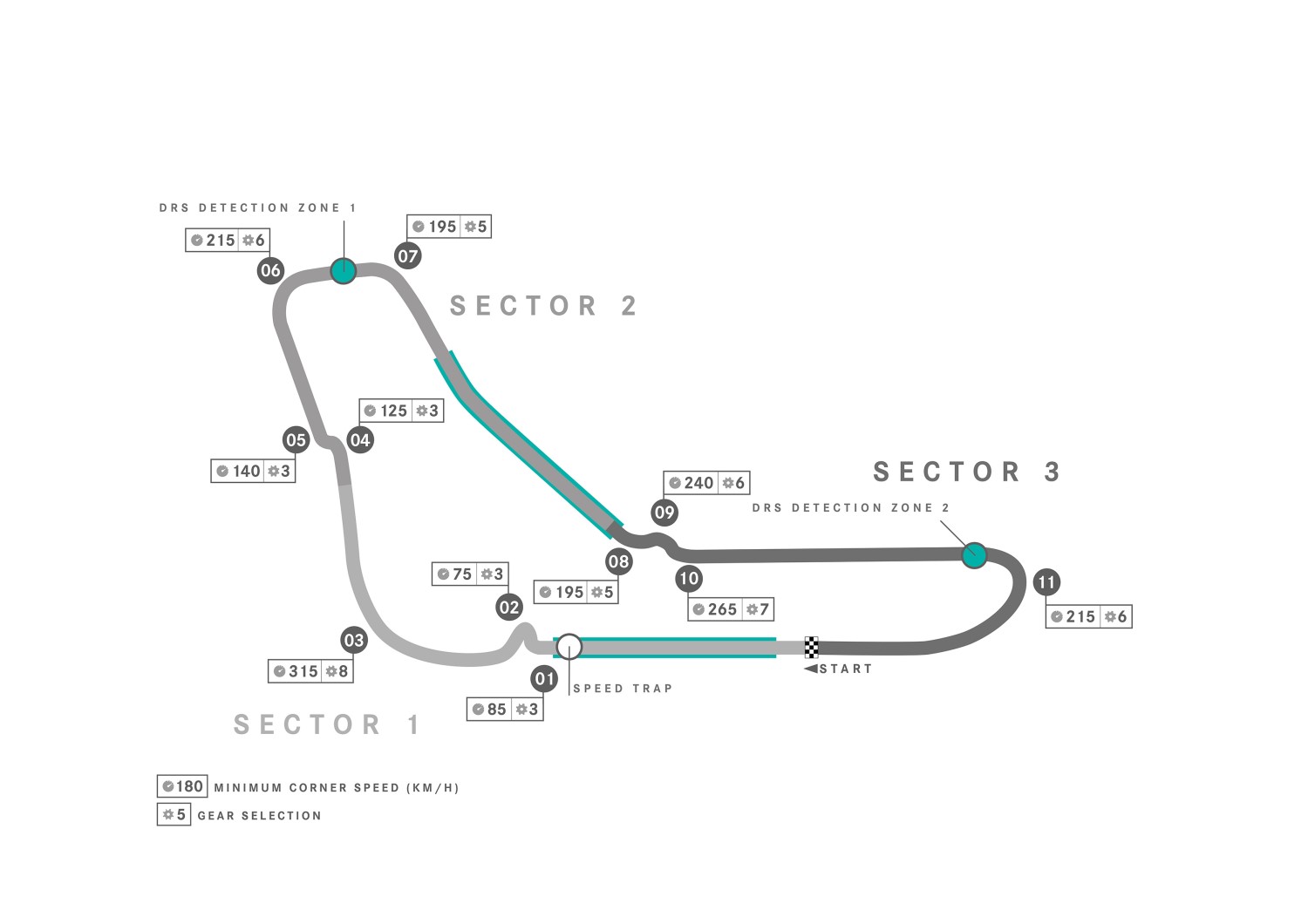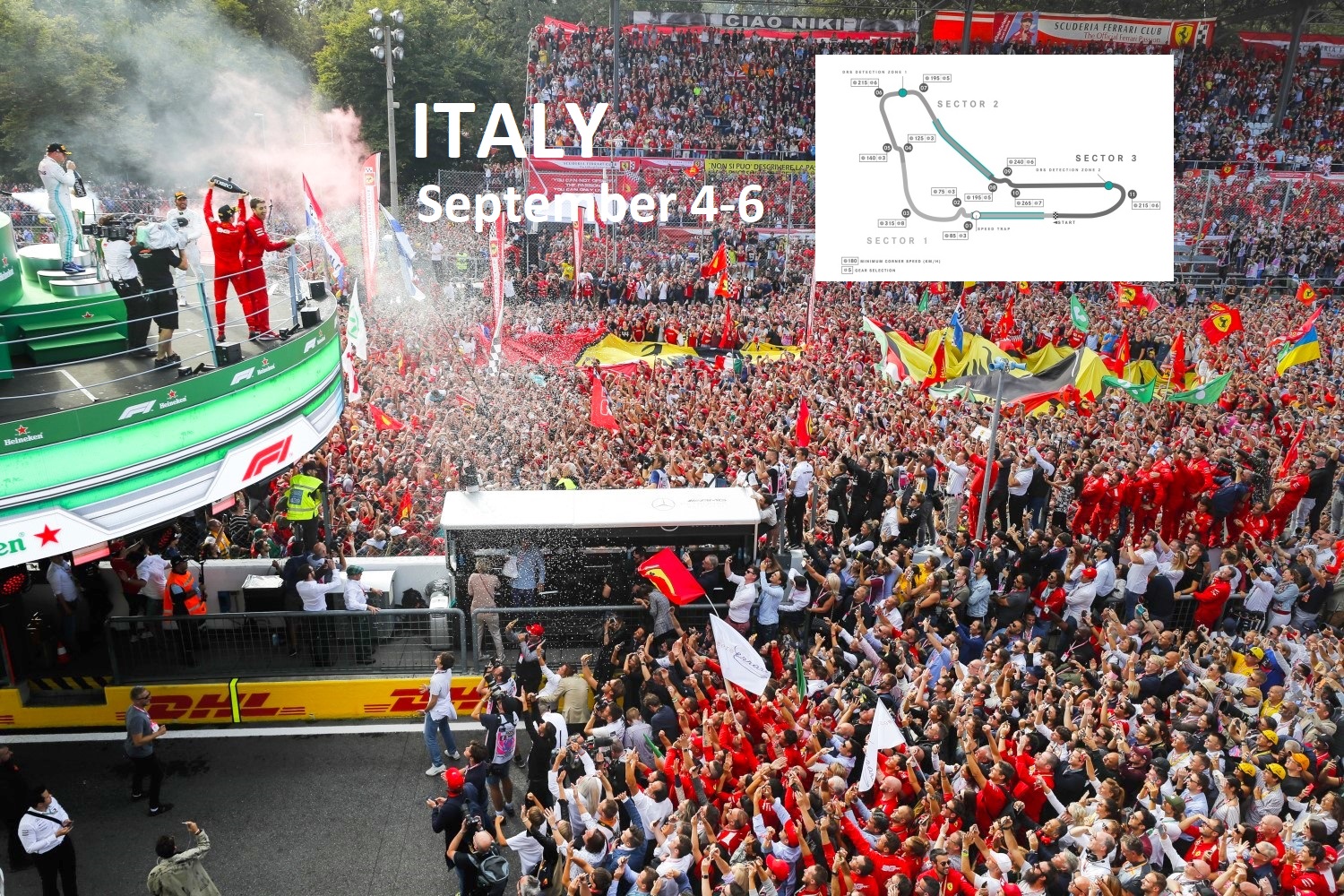F1 Italian GP Preview
Sunday sees the 91st edition of the Italian Grand Prix, the 71st to count towards the Formula 1 World Championship, the only race along with the British Grand Prix to feature in every season since the series began. It has been held at the Monza circuit every year except for the 1980 event which was held at the Dino e Enzo Ferrari circuit at Imola, a race won by Nelson Piquet in a Brabham. Over the years, Scuderia Ferrari has won 19 times, started from pole 21 times and secured a total of 69 podium finishes.
Monza, located a short hop north of fashionista focal point Milan, is one of the oldest purpose-built circuits in the world, having opened its doors in 1922. Its celebrated banking is now a monument to a bygone era but history lurks at every step in the parkland setting as the class of 2020 prepares to add another chapter to the venue’s legacy.
The circuit is the fastest on Formula One’s calendar and is famed for the high-speed sections that are punctuated by a smattering of chicanes and quick corners. These turns, and the heavy braking zones, are made more challenging by the low-downforce packages that Formula One teams run, facilitating speeds in excess of 350km/h being reached on the run to the Rettifilo Chicane. The fastest 10 laps in Formula One history have all come at Monza across the past two seasons as drivers flexed their muscles in ferociously fast cars at this throttle-happy track. Kimi Raikkonen’s 2018 pole lap was achieved at an average speed of 263.588km/h, as he completed the 11 turns and 5.793km in just 1:19.119s.
Speed, slipstreaming and overtaking.
Since the “old” Hockenheim disappeared, Monza is the only high-speed track on the Formula 1 calendar. In the old days, there were no chicanes on the long straights making for some incredibly close racing, with dozens of overtaking moves every lap thanks to the slipstreaming effect. The current track, a temple for Ferrari fans, consists of high speed corners interspersed with long straights, with chicanes to reduce the speeds, so that drivers and cars are subjected to heavy braking forces. The two Lesmo corners are among the most interesting and difficult: exiting the second Lesmo at 180 km/h it is all too easy to end up on the wrong line and run wide in the escape road. However, the most famous corner is probably the Parabolica, a high-speed curve leading on to the start-finish straight with, in the background, the old high speed oval with a 38 degree banking. Watch out also for the first chicane where in the space of 150 meters the cars slow from 340 to 80 km/h. Cars run very little aero downforce to be as fast as possible down the straights, which is the key to a quick lap time.

Monza has historically not been the happiest of hunting grounds for Haas F1 Team and the circuit layout is unlikely to suit the characteristics of the VF-20. But as ever Haas F1 Team and experienced drivers Kevin Magnussen and Romain Grosjean will keep pushing in order to grab any opportunity that may arise.
Last year, the Scuderia won here with Charles Leclerc, just one week on from his maiden Formula 1 win in the Belgian Grand Prix, thus making him the youngest ever driver to take two wins in a row. Ferrari also holds another record at Monza: two years ago, Kimi Raikkonen, at the wheel of the SF17H, took pole at an average speed of 263.587 km/h, the quickest ever lap in a Formula 1 car.
The action will commence with two practice sessions on Friday, prior to final practice and qualifying on Saturday, with Sunday’s 53-lap race set for 15:10 local time (09:10 EST/14:10 BST).
Fact File: Italian Grand Prix
- Just over 77% of the lap time and 84% of the lap distance at Monza are taken at full throttle, the highest percentages of any F1 circuit – hence why Monza is nicknamed the ‘Temple of Speed’.
- The Autodromo Nazionale di Monza features the second-fewest number of corners of any F1 track, with just 11 turns – four left-handers and seven right-handers. Only the Red Bull Ring in Austria has less corners.
- The impact of the tow at Monza is significant, and this can often impact the strategies that teams use in Qualifying. In 2019, the difference between a lap with a tow and without a tow was around 0.7 seconds.
- Because a large chunk of driving at Monza is spent in eighth gear, very few gear changes take place over the course of the lap compared to other tracks. In fact, just 36 gear changes are completed with each circulation of Monza, tied with Silverstone, Mexico City, Interlagos and Suzuka for the lowest.
- The maximum speed cars will reach at Monza is around 336 km/h, the third highest in F1 – behind Paul Ricard (340 km/h) and Mexico City (350 km/h).
- Monza is the second most power sensitive track of the 2020 calendar, along with Spa-Francorchamps. Power sensitivity means the amount of lap time improvement that can be achieved through an increase in power.
- Locking a wheel at Monza is more common than at other circuits, as there is less downforce on the car and the long straights mean the tires are cold for the big braking zones. Drivers can find a lot of time in these slow-speed chicanes and the run-off areas can be unforgiving due to gravel or large sausage curbs. Therefore, a lock-up at Monza usually means the lap is ruined.
- The tires cooling on the straights and the low-downforce configuration also impact braking stability, as they make the car more nervous and unpredictable in the braking zones. This can also increase the likelihood of a lock-up.
- Even though low downforce often features as a talking point every year at Monza, there happens to still be enough downforce on the car to drive it upside down – at least in theory.
- Monza enjoys one of the highest average corner speed of any of this year’s tracks – with Curva Grande (Turn 3) and Parabolica (Turn 11) counterbalancing the slow chicanes.
- Monza offers up the third-highest traction demand of the season, as a lot of the acceleration zones are coming out of low-speed corners. Therefore, mechanical grip is an important factor at Monza to power the cars down the long straights.
- The Monza track features poor traction on the exit curbs and because of the importance of traction out of the slow corners, the drivers will often avoid the exit curbs altogether to get the best possible exit. The ride on some of the curbs is particularly rough for the car, which is also another reason why drivers will avoid the exit curbs.
- The run from pole position to the first braking zone at Monza is one of the longest in F1, measuring 453 meters. Only Barcelona, Silverstone, Mexico City and Sochi have longer runs to the first braking zone.
- 2020 marks the 71st running of the Italian Grand Prix, a race that has been part of every single season in Formula One’s history. It’s also the 70th Italian GP to take place at Monza, with the only other circuit to host the race being Imola in 1980.
- The latest configuration of the Monza track debuted in 2000. Since then, 15 of the 20 races have been won from pole position.
